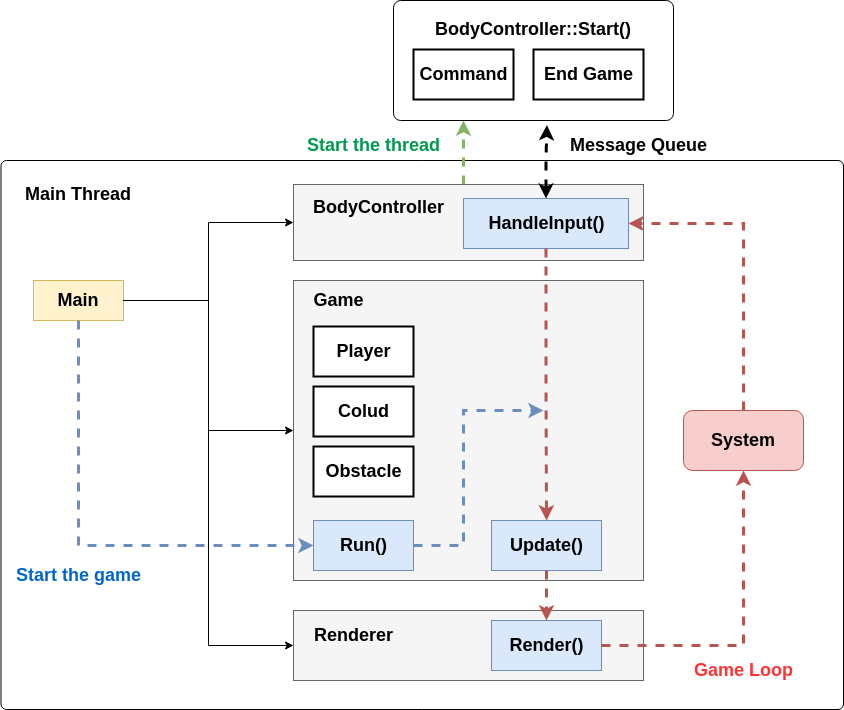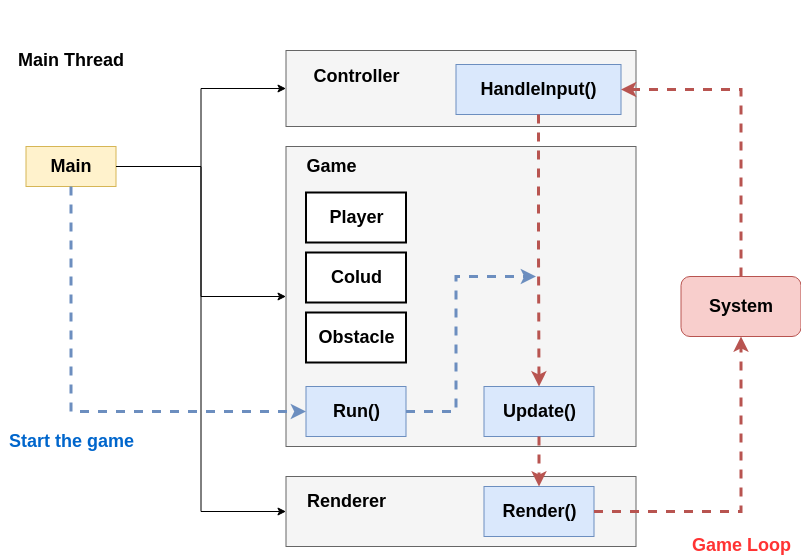Jump is the capstone project for the Udacity C++ Nanodegree Program . In particular, it is a game where you need to jump with yourself to avoid obstacles. It uses the camera of your laptop to detect the movements. Check it out!
Report Bug
·
Request Feature
Jump is the capstone project for the Udacity C++ Nanodegree Program . In particular, it is a game where you need to jump with yourself to avoid obstacles. It uses the camera of your laptop to detect the movements. Check it out!
Clone the repo and build the project. Make sure you have all the requirements.
git clone git@github.com:viciopoli01/Jump.git
cd Jump
mkdir build
cd build
cmake ..
make
./Jump One can pass the camera id according to /dev/video*, like ./Jump 1, by default it is set to 0.
You can choose to control the game using the keyboard (jump pressing the spacebar). Make sure to set to false then the flag BODY_CONTROL in the CMakeLists.txt file.
To run the game you need to have:
- A camera plugged to your computer (or the laptop camera).
- Ubuntu 18.04 or higher version
- OpenCV installed (tested with OpenCV 3.2.0)
- SDL2 installed
- Tested with gcc 7.5.0
Run the game, make sure you have enought space to move and jump before the blue cube hits the green cubes!
You can also select the Debug mode from the CMakeLists.txt file, setting to true the DEBUG flag.
Contributions are what make the open source community such an amazing place to be learn, inspire, and create. Any contributions you make are greatly appreciated.
- Fork the Project
- Create your Feature Branch (
git checkout -b feature/AmazingFeature) - Commit your Changes (
git commit -m 'Add some AmazingFeature') - Push to the Branch (
git push origin feature/AmazingFeature) - Open a Pull Request
The folder structure is organized as follow:
Jump
├── cmake
│ └── FindSDL2_image.cmake
├── CMakeLists.txt
├── include
│ ├── body_controller.h
│ ├── cloud.h
│ ├── controller_general.h
│ ├── controller.h
│ ├── game.h
│ ├── game_object.h
│ ├── message_queue.h
│ ├── obstacle.h
│ ├── player.h
│ ├── renderer.h
│ └── types.h
├── LICENSE
├── media
│ ├── jump.png
│ ├── jump.xcf
│ ├── screenshot.png
│ └── structure
├── README.md
└── src
├── body_controller.cpp
├── cloud.cpp
├── controller.cpp
├── game.cpp
├── game_object.cpp
├── main.cpp
├── obstacle.cpp
├── player.cpp
└── renderer.cpp
The include directory contains all the header files, while the src has all the scources with classes declaration (except for the types that is only an header with some data structure declared inside).
In the cmake there is a FindSDL2_image.cmake that is used by the CMakeLists.txt to find the SDL2 library.
The class structure, when the BODY_CONTROL is true, is defined as follow:
The main creates Game, Renderer and BodyController that starts a new thread that reads the camera id specified by the user. Game stores a Player, a vector of Cloud and vector of Obstacle.
From the main the method Game::run() is called to start the game loop.
In the game loop the the command from the body controller is read and the game status is passed, these tasks are accomplished using MessageQueue.
The class structure, when the BODY_CONTROL is false, is defined as follow:
The main creates Game, Renderer and Controller. Game stores a Player, a vector of Cloud and vector of Obstacle.
From the main the method Game::run() is called to start the game loop.
- Loops, Functions, I/O:
- The project implements C++ functions and control structures.
- The project accepts user input and processes the input. (main.cpp)
- Object Oriented Programming: In the classes GameObject, Cloud, Obstacle, Player, ControllerGeneral, BodyController, Controller, MessageQueue, Renderer, Game.
- The project uses Object Oriented Programming techniques.
- Classes use appropriate access specifiers for class members.
- Class constructors utilize member initialization lists.
- Classes abstract implementation details from their interfaces.
- Classes encapsulate behavior.
- Classes follow an appropriate inheritance hierarchy. (eg. GameObject and Player class)
- Derived class functions override virtual base class functions. (eg. Cloud, Player, Obstacle)
- Templates generalize functions in the project. (eg. the Game class)
- Memory Management
- The project makes use of references in function declarations. (eg.
GameObject::colliding(GameObject const& other)) - The project uses destructors appropriately. (wait for the camera thread to finish in ~BodyController::BodyController())
- The project makes use of references in function declarations. (eg.
- Concurrency
- The project uses multithreading. (eg.
BodyController::start()) - A mutex or lock is used in the project (MessageQueue class).
- A condition variable is used in the project. (MessageQueue class).
- The project uses multithreading. (eg.
Distributed under the GNU General Public License v3.0. See LICENSE for more information.
Vincenzo: polivicio@gmail.com
- This game is build on the Snake game provided in the Udacity course.
- README template









